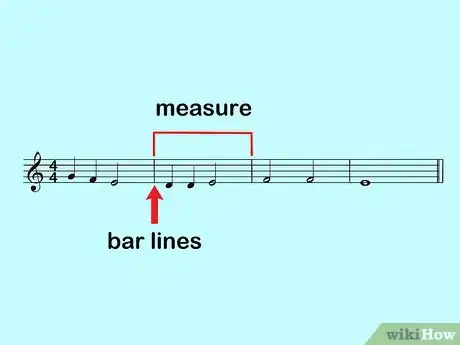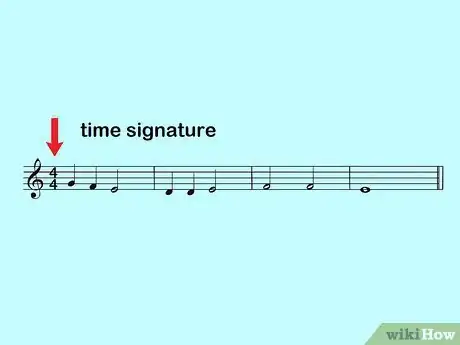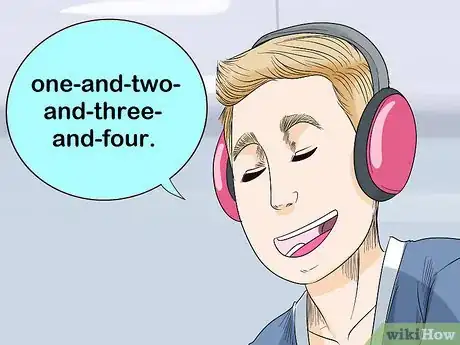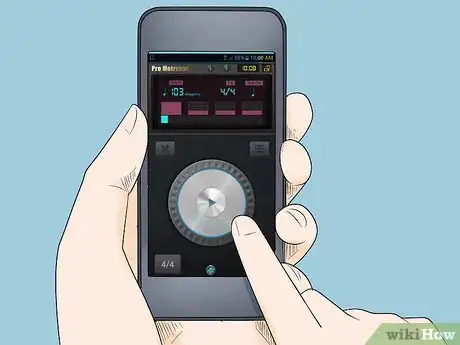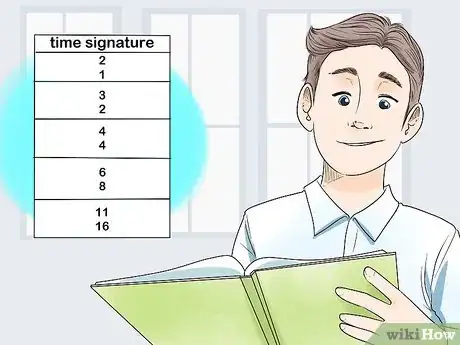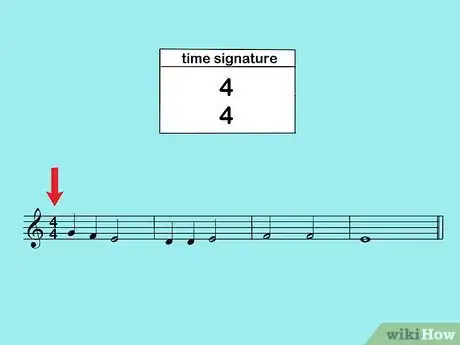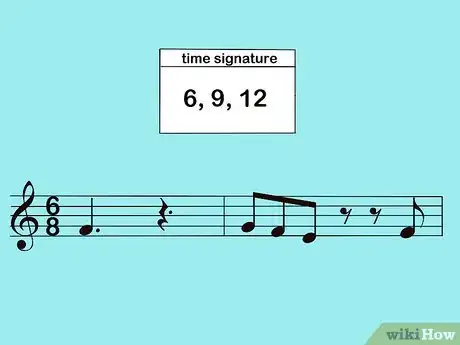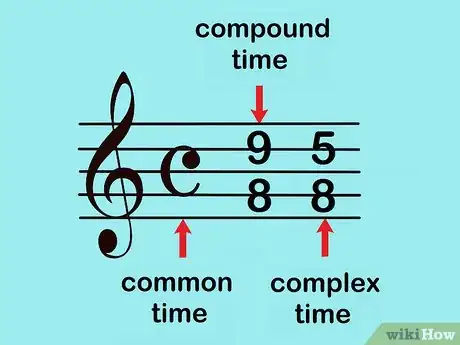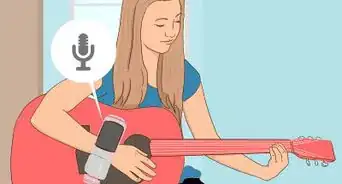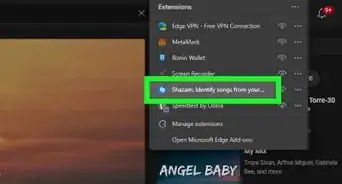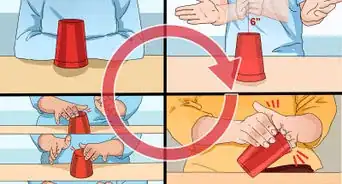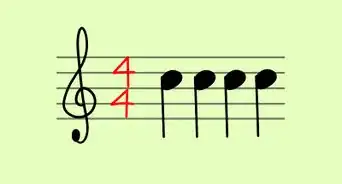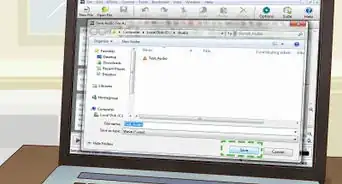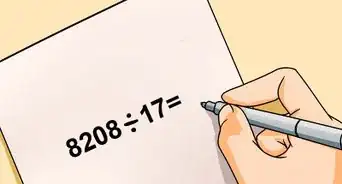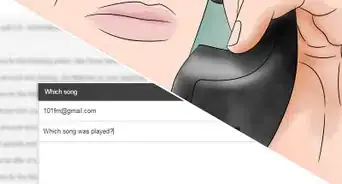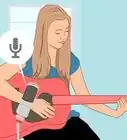This article was co-authored by Annabeth Novitzki. Annabeth Novitzki is a Private Music Teacher in Austin, Texas. She received her BFA in Vocal Performance from Carnegie Mellon University in 2004 and her Master of Music in Vocal Performance from the University of Memphis in 2012. She has been teaching music lessons since 2004.
There are 10 references cited in this article, which can be found at the bottom of the page.
wikiHow marks an article as reader-approved once it receives enough positive feedback. In this case, several readers have written to tell us that this article was helpful to them, earning it our reader-approved status.
This article has been viewed 467,141 times.
Whether you’re a dancer, a musician, or just a music-lover, you know that rhythm is an important foundation of any song, and you’ve probably heard the term beat. A beat is the basic unit of rhythm, the underlying steady pulse of the song, the part that makes you tap your feet. With a little practice and a basic knowledge of music theory, anyone can learn to find and count beats in a piece of music.
Steps
Listening By Ear
-
1Eliminate distractions. When trying to listen for a beat by ear, make sure you give the piece of music all your attention. Use headphones or move to a quiet environment with no noise interruptions.
-
2Pay attention to the lower instruments, like the drums. If you’re trying to listen for the basic beat of a song, tune out the top instruments like lead guitar or vocals. Try listening for the bass instruments, like the bass guitar or bass drum. [1]
- If you’re listening to a digital recording, try turning up the bass so that you can hear it more easily.
- In a song, the bass line often carries the steady beat. Ignore the complex rhythm and melody. Try to pick out what feels like the heartbeat of the song.
- Listening to the drumline is the best way to count the beats. In country and rock music, you can typically hear the bass drum on beats 1 and 3 and the snare on 2 and 4. In pop, funk, and house music, the bass drum is generally played on all 4 beats, which is referred to as "four on the floor."[2]
Advertisement -
3Listen to phrasing. A musical phrase is a segment of music that sounds complete in and of itself, often only a few measures long.[3] Practice listening to natural phrasing in music.
- Think of listening to a song as though you were listening to a conversation. Where would the breaths be? What sounds like a musical “sentence”? Try counting these smaller sections of the music to find where the downbeats fall.
-
4Say it out loud. Again, use your words, or tap your feet along to the beat that you feel. If you are not on the beat, practicing out loud will make it more obvious and easier to get back on track.
-
5Start with songs you know well. Familiarity with a song will make it easier to find the underlying beat or pulse. Likely, you already have an underlying understanding of where the beats fall. In learning to find rhythm, repetition is key.
-
6Move along with the music. You can walk, jog, or dance to the song. Your body will probably naturally land on the ground on the beat. Check out John Travolta in "Staying Alive" if you want to see an example: https://www.youtube.com/watch?v=XfwQ_7xqO7Y
Using Sheet Music
-
1Know your rhythms. Before you can begin to count in music, you need to understand how long an individual note or rest lasts. Notes are the periods of sound in a song, and rests represent the lengths of the silences in a piece of music. [4]
- A whole note lasts for 4 beats. A half note lasts for 2 beats. A quarter note lasts for 1 beat. An eighth note lasts for a half of a beat. A sixteenth note lasts for a quarter of a beat.
- Rests follow the patterns of the notes. For example, a half rest is a silence that lasts for 2 beats.
- A dot next to a rest or a note means that the note or rest is increased by half its value. For example, a dotted half note lasts for 3 beats. [5]
-
2Measure it. Make sure you understand that every piece of music is divided into parts called measures or bars. This will help you count beats. Every measure in a piece of music has an equal number of beats.
-
3Determine the time signature. The time signature appears at the beginning of every piece of music as a fraction. It may change throughout a song, and if it changes, the new time signature will appear at the beginning of a bar. [6]
-
4Use your words. As you read sheet music, articulating the beats in a song makes it easier to understand and keep track of. For eighth notes, use “and.” Say, “one-and-two-and-three-and-four.” For sixteenth notes, use “e” and “a.” Say, “one-e-and-a-two-e-and-a-three-e-and-a.”[7]
- In a song, the downbeat is the first articulated beat in a bar. For example, the “one.” Make sure you find and articulate this first.
- The upbeat is the “and.” For example, if you are tapping your foot to a beat, the upbeat is the time when your toes are in the air.
-
5Use a metronome. If you know the time signature of a piece, a simple way to help keep a steady tempo while counting beats is to use a metronome. A metronome gives a regular ticking sound with a set rate of beats per minute. Many free metronomes can be found online.[8]
Determining Time Signature
-
1Understand the importance of time signatures. To count the beats in a piece of music, you must understand the 2 components of rhythm: meter and tempo. Tempo is simply a description of how fast or slow a piece of music is. Meter is the regular pattern of beats in a song and how those beats are stressed. Time signatures look like fractions that describe the meter of a piece of music.
- The top number tells you how many beats will be in each measure. The bottom number tells you what kind of note each beat is. For instance, if the bottom number is 1, that means whole notes and if the bottom number is 2, that means half notes. Similarly, 4 means quarter notes and 8 means eighth notes.
-
2Practice counting simple time signatures first. Time signatures can represent simple time, compound time, or complex time. Counting simple time first will help you familiarize yourself with the process of figuring out and understanding the time signature.[9]
- Simple time can be duple, triple, or quadruple, which means the top number will always be 2, 3, or 4.
- Unlike compound time, in simple time, you feel the beat in multiples of 2. This means that you can divide each note in each bar into 2. For example, in 2/4 time, the 2 quarter notes per bar can each be subdivided into 2 eighth notes. The natural accent falls in multiples of 2 or 3.
- Tap your feet. When figuring out the time signature by listening to a song, pay attention to the beat of the bass line. Try to determine whether or not the pulse you hear can be naturally divided into 2. Listen to determine a repeating pattern of rhythm, and count how many notes occur between each repetition.
- Remember common time signatures. A lot of Western music uses 4/4 time, so when in doubt, try counting in 4/4 and see if it fits. Familiarize yourself with other time signatures. For example, 3/4 has a waltz feel to it.
-
3Count in compound time. Unlike simple time, compound time is felt in groups of three.[10] For this reason, the dotted note often defines compound time. The top number of a compound time signature is always 6, 9, or 12.
- In compound time, divide the top number by 3 to get the number of beats in a bar. The units of the beats are found in the bottom number. For example, in 6/8 time, there are 2 beats per measure, and each beat lasts 3 eighth notes, or a dotted quarter note.
- The common children’s song “Row Your Boat” can be counted in 6/8 time, beginning with 2 dotted quarter notes in “row, row.” Try tapping your feet while you sing this song to understand how compound time feels.
-
4Know that complex time signatures sometimes occur. This means a time signature doesn’t fit into the duple, triple, or quadruple categories. For example, 5/8 is a complex time signature because of the odd number 5.
- It’s easiest to look at complex time signatures as a combination of simple and compound time signatures.
- For example, in 5/8, there is one simple beat (two eighth notes) and one compound beat (three eight notes). The order these beats appear in the measure doesn’t matter.
- When you listen to a song that utilizes a complex time signature, you will notice that some of the beats subdivide into two and some into three.
- Use your simple and compound counting skills to keep track of complex meters.
Expert Q&A
Did you know you can get expert answers for this article?
Unlock expert answers by supporting wikiHow
-
QuestionWhat are beats in music?
 Annabeth NovitzkiAnnabeth Novitzki is a Private Music Teacher in Austin, Texas. She received her BFA in Vocal Performance from Carnegie Mellon University in 2004 and her Master of Music in Vocal Performance from the University of Memphis in 2012. She has been teaching music lessons since 2004.
Annabeth NovitzkiAnnabeth Novitzki is a Private Music Teacher in Austin, Texas. She received her BFA in Vocal Performance from Carnegie Mellon University in 2004 and her Master of Music in Vocal Performance from the University of Memphis in 2012. She has been teaching music lessons since 2004.
Music Teacher
-
QuestionHow do you count music notes?
 Annabeth NovitzkiAnnabeth Novitzki is a Private Music Teacher in Austin, Texas. She received her BFA in Vocal Performance from Carnegie Mellon University in 2004 and her Master of Music in Vocal Performance from the University of Memphis in 2012. She has been teaching music lessons since 2004.
Annabeth NovitzkiAnnabeth Novitzki is a Private Music Teacher in Austin, Texas. She received her BFA in Vocal Performance from Carnegie Mellon University in 2004 and her Master of Music in Vocal Performance from the University of Memphis in 2012. She has been teaching music lessons since 2004.
Music Teacher
-
QuestionWhat is a 4 count in music?
 Annabeth NovitzkiAnnabeth Novitzki is a Private Music Teacher in Austin, Texas. She received her BFA in Vocal Performance from Carnegie Mellon University in 2004 and her Master of Music in Vocal Performance from the University of Memphis in 2012. She has been teaching music lessons since 2004.
Annabeth NovitzkiAnnabeth Novitzki is a Private Music Teacher in Austin, Texas. She received her BFA in Vocal Performance from Carnegie Mellon University in 2004 and her Master of Music in Vocal Performance from the University of Memphis in 2012. She has been teaching music lessons since 2004.
Music Teacher
References
- ↑ http://www.easyeartraining.com/learn/get-rhythm-finding-the-beat/
- ↑ https://www.npr.org/2011/12/31/144482049/whats-that-sound-the-rhythm-that-ruled-2011
- ↑ https://www.musictheory.net/lessons/55
- ↑ https://www.musical-u.com/learn/how-to-hear-and-create-time-signatures/
- ↑ http://www.musictheory.net/2015/lessons/14
- ↑ http://www.dolmetsch.com/musictheory4.htm
- ↑ http://www.harmonycentral.com/forum/forum/guitar/acapella-40/1889626-
- ↑ https://www.metronomeonline.com/
- ↑ http://www.musicarrangers.com/star-theory/t03.htm
About This Article
If you want to count the beats in a piece of music, remove all distractions by listening to the music through headphones or in a quiet place. As you listen to the song, focus on the lower instruments, like the bass drum or bass guitar, as they provide the beat. To help count, say the numbers out loud or try tapping your foot to the beat, which will make it easier to keep time. Once you've figured out the beat in a piece, use a metronome to keep a steady tempo as you count. For advice on how to read sheet music and how to identify different time signatures, read on!





